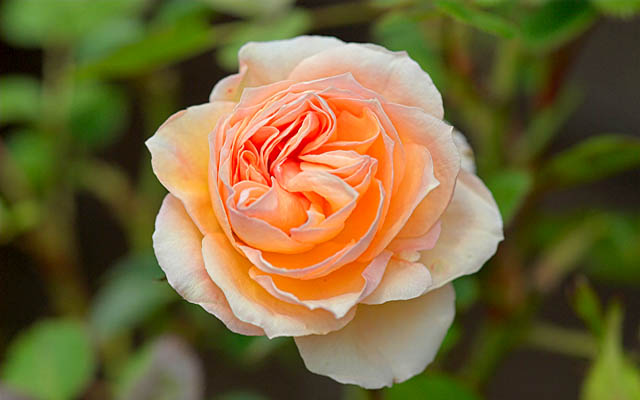Drop the myths about roses
Charles Quest Ritson says it’s time we got rid of the notion that roses are difficult to grow


It’s very strange. Roses are wonderfully rewarding and easy to grow, but they have the reputation of being ‘difficult’. All that mumbo-jumbo about pruning, all that earnest advice on pests and disease that’s where the trouble begins. But almost all the traditional advice on how to grow roses is baloney.
I don’t spray my roses, even though I live in a very wet area and most of my plants get mildew or black spot. Some get both. Does it matter? Not at all. Fungal diseases never killed any rose and few are the plants that mildew and black spot actually render unsightly, but this year’s victims are often free from disease the following year. I’ve no moral objection to chemicals, but life is too short to spray and we’re not here to underwrite the profits of the chemicals industry.
The pruning of roses has acquired a mystique of its own. I don’t prune to any particular regime. In fact, the only time I prune roses is when I think they’re getting too big, not flowering enough or need opening up. That’s the key to pruning—think of roses as just another shrub. Take Hybrid Teas, for example. I do deadhead them if I have the time, but may let them go for three or four years without a proper prune, whereupon they start flowering much earlier and produce many more flowers.
When they reach their natural height (say, 6ft), they don’t flower so prolifically, which is when I give them a renewal cut, back to about half of their height, to encourage new growth. This could be at any time of the year—in midwinter, for example, or in midsummer after the first flush of flowering. It really doesn’t matter.
I grow at least 1,000 roses of every imaginable type and they don’t seem to suffer from my failure to apply the traditional rose wisdom (‘prune them in late winter to within an inch of their life’), which was developed in the 19th century by people who grew roses to win competitions. In fact, I think my roses look better than most.
Nor is it true that ‘roses are gross feeders’. This is also a myth that dates from the 19th-century fashion for growing roses for exhibition. A Hybrid Perpetual—and, later, a Hybrid Tea—would be grafted onto a vigorous rootstock, piled up with manure and pruned and disbudded so that it produced only one flower, big enough to win a prize. Then, the plant would be dug up and burned. Nowa-days, roses are garden plants.
I haven’t got the time to lug barrowfuls of manure around the garden in winter and, anyway, one never has enough of the stuff for every plant that would enjoy a dollop. So are roses gross feeders or not? It would be truer to say that roses respond well to feeding. All shrubs do.
Sign up for the Country Life Newsletter
Exquisite houses, the beauty of Nature, and how to get the most from your life, straight to your inbox.
Nurserymen encourage us to believe that rose bushes don’t live for long. That’s not true, either. The rose trade is posited on novelty new is beautiful, old is rubbish but some of the best roses are great survivors. There is a plant of the climbing Tea Rose Homère on the south side of the parish church at Staplefield in West Sussex that was planted in 1862. As for the quality of individual varieties, a Hybrid Tea such as Peace is still a much better rose, 70 years after it was first introduced, than many of its descendants. The RHS acknowledged this last year by confirming its Award of Garden Merit.
But one learns all the time. This year, the flowers on my roses have been enormous. I put it down to the very wet spring. The lesson? Roses also respond to watering, even in the damp British climate. In future, I shall water them—but only if I can find the time.
So, let’s abandon the myths. You know, I know, rose-lovers know, that roses are among the easiest and most rewarding of all plants. They don’t have to be constantly fed, watered, pruned, deadheaded and sprayed—just simply enjoyed!
-
 What should 1.5 million new homes look like?
What should 1.5 million new homes look like?The King's recent visit to Nansledan with the Prime Minister gives us a clue as to Labour's plans, but what are the benefits of traditional architecture? And can they solve a housing crisis?
By Lucy Denton
-
 The battle of the bridge, Balloon Dogs and flat fish: Country Life Quiz of the Day, April 15, 2025
The battle of the bridge, Balloon Dogs and flat fish: Country Life Quiz of the Day, April 15, 2025Tuesday's quiz tests your knowledge on bridges, science, space, house prices and geography.
By James Fisher